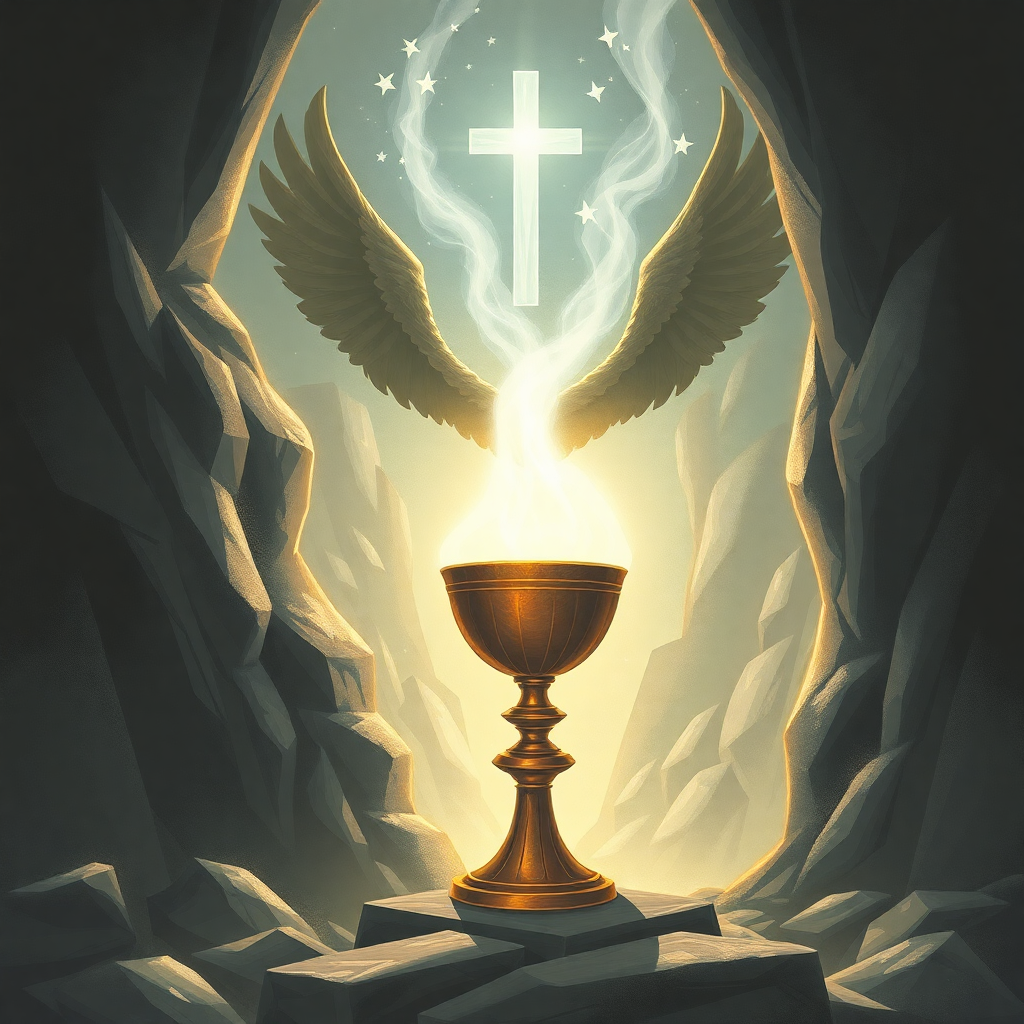The Holy Grail: A Journey Through Legend and History
As a chalice, it represents the vessel of divine grace and the promise of eternal life. The blood it supposedly contained connects it directly to Christ's sacrifice and the concept of redemption through suffering.
The Holy Grail stands as one of the most enduring and captivating legends in Western culture. This mysterious vessel, steeped in Christian symbolism and Arthurian romance, has captured imaginations for over a thousand years. From its humble origins in medieval literature to its modern-day appearances in blockbuster films, the Grail continues to represent the ultimate quest for spiritual fulfillment and divine truth.
Origins and Early Christian Connections
The concept of the Holy Grail first emerged in medieval Christian tradition, where it was believed to be the cup used by Jesus Christ at the Last Supper. According to legend, this same vessel was later used by Joseph of Arimathea to catch Christ's blood during the crucifixion. The story suggests that Joseph brought the Grail to Britain, where it became a sacred relic of immense power and significance.
The earliest literary reference to what would become the Grail legend appears in Chrétien de Troyes' unfinished 12th-century romance "Perceval, or the Story of the Grail." However, de Troyes' version differs significantly from later Christian interpretations. His "graal" was simply a serving dish or shallow bowl, and the story focused more on chivalric adventure than religious symbolism. It wasn't until subsequent writers expanded upon his work that the Grail became explicitly connected to Christ's passion.

The Arthurian Connection
The Holy Grail became inextricably linked with King Arthur and his Knights of the Round Table through a series of medieval romances. In these tales, the quest for the Grail represents the pinnacle of knightly virtue and spiritual purity. Sir Galahad, often portrayed as the most perfect of knights, is typically the one who successfully achieves the Grail quest, though versions of the story also feature Sir Percival and Sir Lancelot in prominent roles.
The Grail quest serves as more than just a physical journey in these narratives. It represents a spiritual pilgrimage, testing the knights' faith, purity, and dedication to Christian ideals. The quest often requires knights to overcome not just external obstacles but internal struggles with sin, doubt, and worldly temptation. This spiritual dimension elevated the Arthurian legends beyond mere adventure stories, transforming them into complex allegories about the human condition and the search for divine grace.
Symbolism and Religious Significance
Throughout its literary evolution, the Holy Grail has accumulated layers of symbolic meaning. As a chalice, it represents the vessel of divine grace and the promise of eternal life. The blood it supposedly contained connects it directly to Christ's sacrifice and the concept of redemption through suffering. The Grail's elusive nature suggests that spiritual enlightenment cannot be easily attained but requires dedication, purity of heart, and divine favor.
The search for the Grail has also been interpreted as a metaphor for the human quest for meaning and purpose. Just as the knights of the Round Table embarked on dangerous journeys to find this sacred object, individuals throughout history have sought their own "grail" – whether it be love, knowledge, artistic achievement, or spiritual fulfillment. This universal theme helps explain the legend's enduring appeal across different cultures and time periods.
Historical Claims and Archaeological Interest
While the Holy Grail remains firmly in the realm of legend for most scholars, various historical artifacts have been claimed as the "true" Grail throughout the centuries. The Chalice of Valencia in Spain, the Sacro Catino in Genoa, and the Nanteos Cup in Wales have all been proposed as candidates, each with its own compelling backstory and devoted believers.
These claims reflect humanity's desire to connect with the divine through physical objects and tangible history. Archaeological investigations into these artifacts have generally failed to substantiate their connection to Christ, but they continue to attract pilgrims and researchers alike. The search for the historical Grail demonstrates how legends can take on lives of their own, inspiring real-world quests that blur the line between faith and scholarship.
Modern Cultural Impact
The Holy Grail has found new life in contemporary culture, appearing in everything from serious literary works to popular entertainment. Writers like T.S. Eliot incorporated Grail symbolism into modernist poetry, while filmmakers from John Boorman to Steven Spielberg have brought the quest to the silver screen. The Indiana Jones franchise, in particular, introduced the Grail to new generations, combining adventure storytelling with the legend's spiritual themes.
Modern interpretations often reflect contemporary concerns and values. Some versions emphasize the Grail's connection to feminine spirituality and the divine feminine, drawing on alternative historical narratives. Others focus on the psychological aspects of the quest, treating the search for the Grail as a journey of self-discovery and personal transformation.
The Eternal Quest
The Holy Grail reminds us that some of the most powerful human stories are not about destinations but about the journey itself. Like the knights of legend, we may never find what we're ultimately seeking, but the quest itself transforms us, teaching us about courage, faith, and the enduring power of hope. In this way, the Grail remains not just a medieval legend but a living symbol of the human spirit's refusal to settle for anything less than the extraordinary.